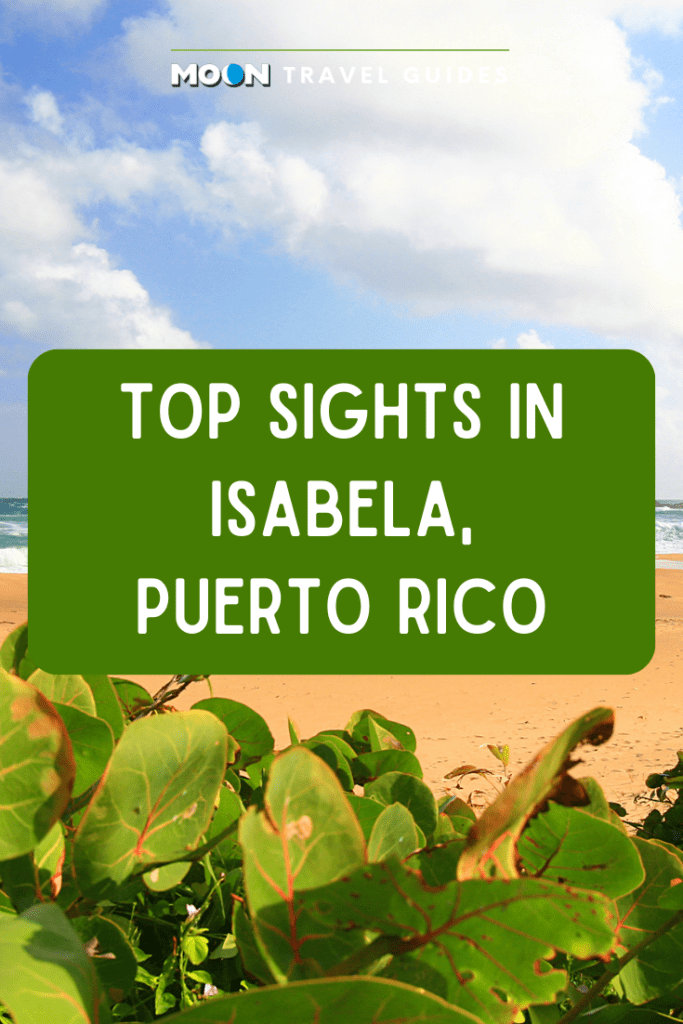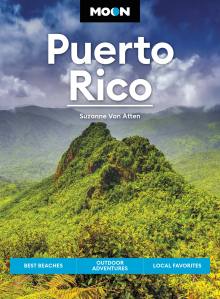Top Sights in Isabela, Puerto Rico
Isabela is an off-the-beaten-path gem of a destination. Here, cliff-top dwellings look out over coastal plains rimmed by petrified sand dunes and big swells that beckon surfers. At its center is the bustling Plaza de Isabela anchored by the church, Parroquia San Antonio de Padua, and the alcaldía (city hall), as well as a number of restaurants and stores that cater to residents. Visitors gravitate to PR 466, which stretches alongside the town’s gorgeous beaches where there are plenty of opportunities to go swimming, surfing, diving, and horseback riding. There are also several hotels, restaurants, and bars, too.
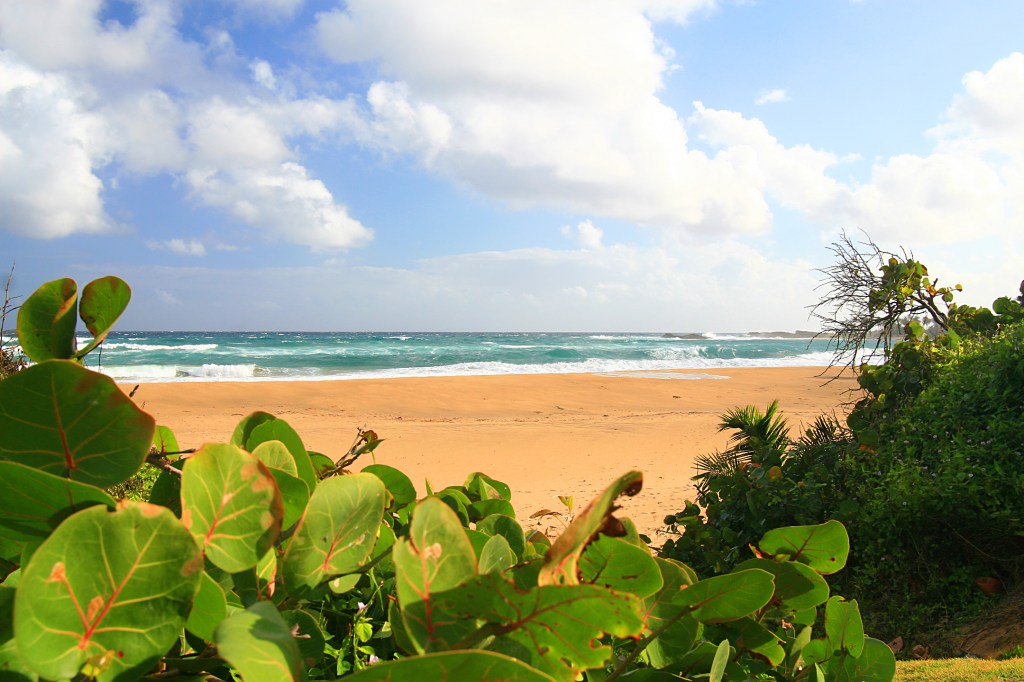
Condominium developments have started to encroach in the area, but there are still long stretches of undeveloped land thick with palm roves and flat, grassy plains where cattle graze. Beyond the plains is a long cliff that runs parallel to the beach, creating a dramatic backdrop to the pastoral scene. A paved 12-kilometer (7-mi) bike path provides an ideal way to take in the natural beauty.
The area known today as Isabela was once ruled by Cacique Mabodamaca, one of the island’s most powerful Taíno chiefs. Legend has it that when faced with capture by the Spanish colonists, he leapt to his death off the cliffs. When his body was recovered, the medallion that signified his lofty place in the hierarchy of Taíno culture was missing from around his neck and is still sought among the cliffs today. A striking monument to Mabodamaca exists at the intersection of PR 2 and PR 113, marking the northern entrance to the region. A large bust of the great chief has been carved into the side of the mountain, his medallion respectfully replaced around his neck. The monument serves as a reminder of the Taíno culture that once prevailed in the area.
Sights
Cara del Indio
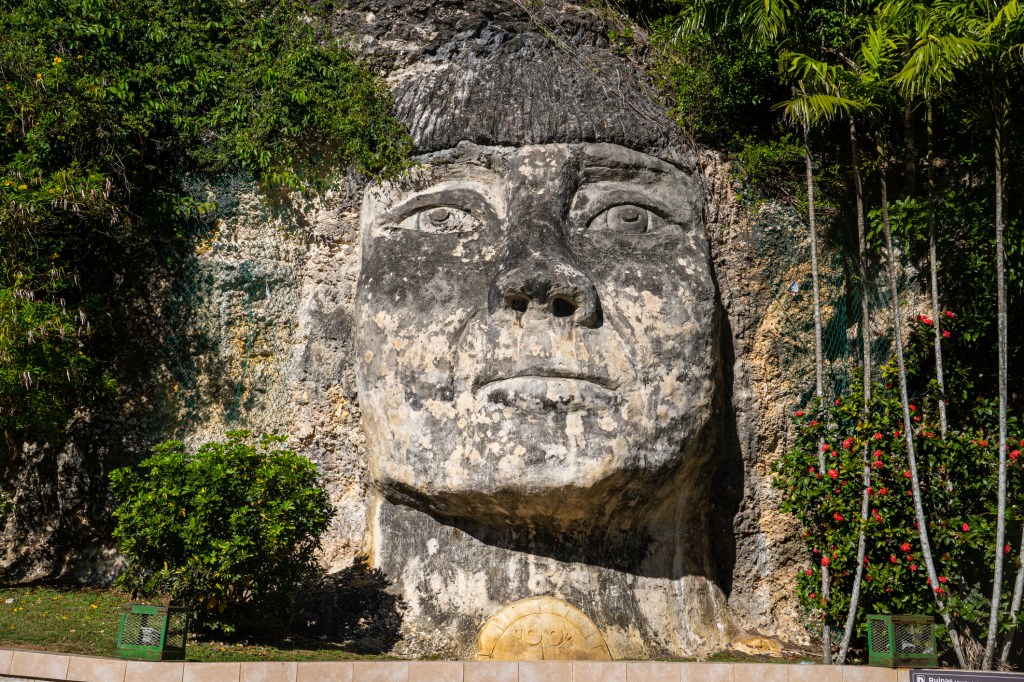
For travelers approaching the west coast along PR 2, their arrival is heralded by Cara del Indio, a massive modern carving in a rock wall of the head of Taíno chief Mabodamaca. This marks the turnoff to Isabela on PR 113. It’s a popular stop for photographs and a snack from the roadside food vendor usually stationed across the street. According to legend, Mabodamaca leapt to his death to avoid capture by the Spanish. At nearby Playa Pastillo, below Royal Isabela, is a carving etched into the rocky cliff by nature that is also called the Cara del Indio.
Gozalandia Cascadas
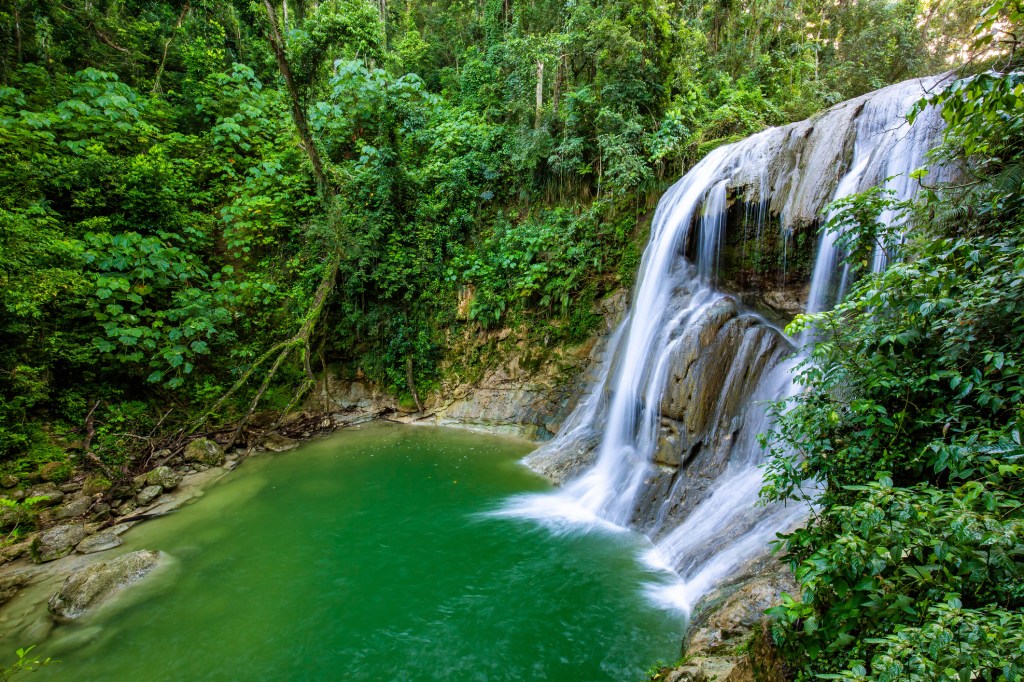
Gozalandia Cascadas is an off-the-beaten path, hidden gem of natural beauty tucked in a tropical forest near San Sebastian, 27 kilometers (17 mi) south of Isabela. There are a number of waterfalls in Puerto Rico, but Gozalandia is double the fun because it has two waterfalls: one upriver and one downriver, each with a rope swing and a natural pool. Anyone is free to try their rope-swinging skills, but there are no lifeguards or other security measures. On-site are bathrooms and a chinchorro serving beer, cocktails, and Puerto Rican cuisine.
From the parking lot, proceed downhill to a concrete path. Turn right, and a moderate, 15-minute uphill hike takes you to the smaller, upriver waterfall. The path to the left leads to a steep, 10-minute hike down wooden steps to the larger, downriver fall.
To get to Gozalandia, travel south from Isabela on PR 112 to Moca and turn left onto PR 446, then left at the homemade sign that says “Cataratas/Waterfall.” (If you reach PR 445, you’ve gone too far.) Proceed less than half a kilometer and turn left through the gate and proceed another half-kilometer to the parking lot. Allow about 40 minutes for the drive.
Bosque Estatal de Guajataca
Bosque Estatal de Guajataca is a 2,357-acre forest reserve in a mountainous region south of Isabela. Be advised: The drive here is not for the fainthearted. The closer you get to the forest, the narrower the road becomes until it’s just one car wide, despite the fact that it’s a two-way road. Adding to the thrill, the road climbs steadily upward and takes many sharp twists and turns around mountains with steep, unprotected drop-offs just inches from the road’s pavement. You know you’re close—and none too soon—when you encounter a sign that warns drivers to roll down their windows, turn off their radios, and honk their horns as they travel around the blind curves.
The forest is well worth the drive to get there, though. A subtropical moist forest, it’s distinguished by its unique karst topography featuring underground limestone caves and dramatic haystack hills called mogotes. Because its temperature wavers between 75°F and 79°F, it’s a great place to escape the summer heat.
Bosque Estatal de Guajataca is rich in indigenous f lora and fauna; Honduras mahogany and teak hibiscus thrive here, and it’s home to 45 species of birds, including the Puerto Rican woodpecker, screech-owl, and bullfinch. It’s also where you can find the rare, endangered Puerto Rican boa constrictor.
There are more than 40 kilometers (25 mi) of trails in the forest, but the one that’s well marked and most often used is a moderate hike from the trailhead by the park office (PR 446, km 9) to El Viento Cave (4 km/2.5 mi). The route begins on the interpretive trail ,then branches off onto Trail #1, which leads to the mouth of the cave. From there, descend some 40 steep and slippery steps into the cave. Bring a strong flashlight and backup batteries. There are no lights inside the cave, and there are holes and slippery spots where injuries could easily occur. Proceed with caution, allowing about two hours for the hike and cave exploration.
Primitive camping is allowed, but a permit is required.
Cuevas Las Golondrinas
Located at Playa Pastillo is Cuevas Las Golondrinas, a large, arched opening in a rock wall on the far western end of the beach that brings to mind a cathedral carved by nature. Here, swallows roost and can be seen flying in and out. The cave is typically only accessible during the summer, and when the tide is low and the waves are small. Swimming is not advised at any time at Playa Pastillo because of rough waters and strong currents.
To get here, take PR 113 to km 5.1 and turn onto Calle El Pastillo. Drive to the end and park on the side of the street. If you’re facing the ocean, turn left and walk on the beach about 20 minutes to reach the cave.
Ermita de San Antonio de Padua de la Tuna
Ermita de San Antonio de Padua de la Tuna is the ruins of a church founded in 1730 in what was the first Spanish settlement in the northwest corner of the island, called Tuna. In the early 1800s, the community relocated closer to the coast and became known as Isabela. The ruins are visible behind a locked chain-link fence. Next door is the office of Casa Tuna, the nonprofit organization that protects and studies the ruins. Call to schedule a guided tour inside the gates.
The ruins are in a residential neighborhood. Traveling west from Quebradillas on PR 2, drive 2.5 kilometers (1.5 mi) past the turnoff to PR 113 and Cara del Indio, and watch for signs. Turn left on Calle Cerro de Los Pineiros. Stay left at the fork and travel about 2 kilometers (1 mi), then turn left on Calle Ermita. The ruins are on the right.
